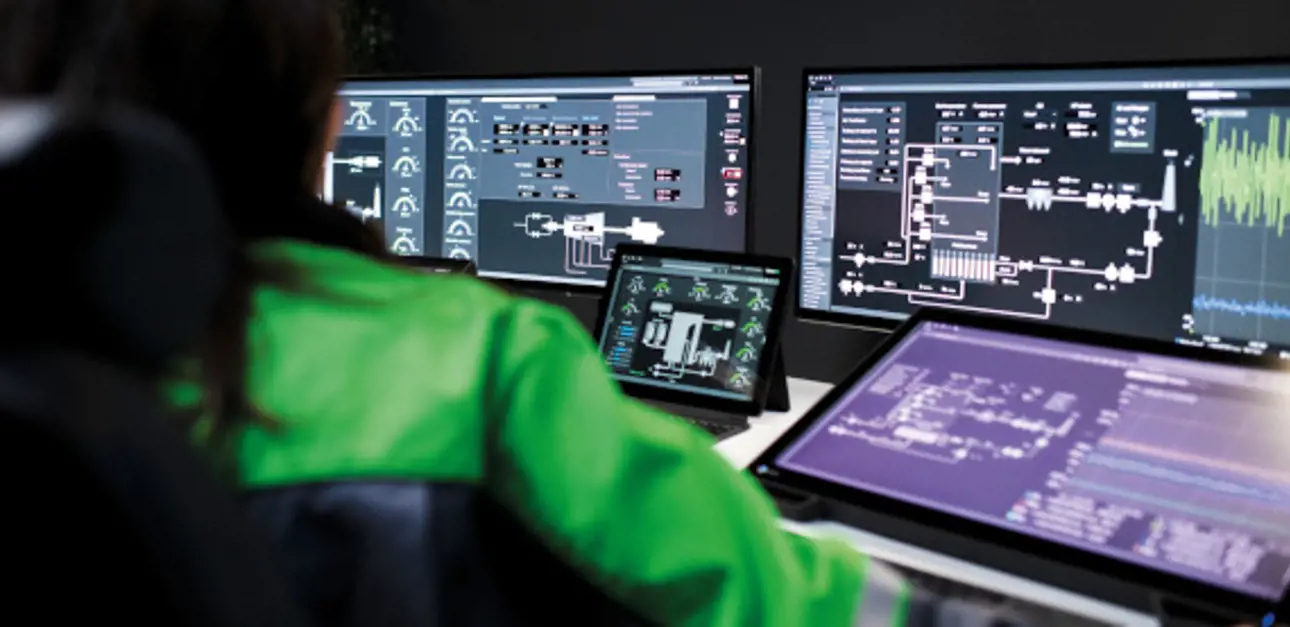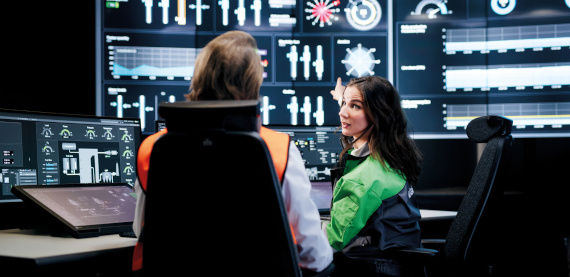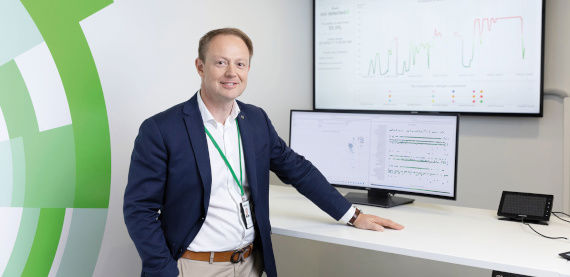Continuous performance improvement through automation and digitalization
While automation and Industrial Internet applications increase process reliability and performance, combining them seamlessly is also paving the way to autonomous mills.

The global sustainability megatrend is increasingly at the core of Valmet’s customers’ operations. The improvement of performance is therefore motivated by the need to decrease emissions and use raw materials more effectively. Changing customer needs increase the demand for automation and digitalization, because new technologies can improve performance in several different areas.
Services are increasingly the solutions for production development
Kari Huovila, VP, Automation Services Business Unit at Valmet, says that most automation projects start by charting with the customer the problems that need solutions. Work can then start to outline the kind of technology required.

"A paper mill will no longer purchase just a device for measuring fiber properties. Instead, the customer will acquire a service to achieve the desired level of quality,” Kari Huovila explains.
In addition to distributed control systems and industry-specific automation applications, Valmet’s automation offering includes quality management systems, as well as analyzers and measurements, various Industrial Internet applications and automation services.
“Instead of just technology, we’re providing more and more services that are tied to performance and benefits for the customers. For example, a paper mill will no longer purchase just a device for measuring fiber properties. Instead, the customer will acquire a service to achieve the desired level of quality,” Huovila explains.
We’re providing more and more services that are tied to performance and benefits for the customers.
The heart of Valmet’s automation offering, the Valmet DNA Automation System, was introduced to the market at the beginning of the millennium and is under constant development.
“Our technology is developed to allow for the maintenance and updating of the customer’s systems even decades later. The customer can be confident that new applications can always be connected with the existing system,” Huovila says.
A good example is Valmet’s web-based DNA User Interface, which is one of the market’s first. Previously supplied systems can be upgraded with it, meaning the benefits of browser-based operation - such as secure access to the automation system from anywhere, are quickly available for the customers.
Industrial Internet creates value beyond the value chain
In the conventional scheme, automation has consisted of independent islands with only limited external connections. Today, the Industrial Internet can easily connect systems. “We’re witnessing a technological breakthrough in which systems’ internal network extends securely across the Internet into Industrial Internet solutions connecting different systems and devices. This requires actions like responding to all information security threats, which is a key area of our constant development work,” says Vice President of Automation R&D, Jukka Ylijoki.

“We’re witnessing a technological breakthrough in which systems’ internal network extends securely across the Internet into Industrial Internet solutions connecting different systems and devices,” says Jukka Ylijoki.
Valmet is one of the few operators that can supply its key customer industries with systems in which data-based production plant performance development is enabled by seamlessly combining the same company’s digital process technology, measurement devices and process automation. “For example, we’re currently undertaking quality optimization across the customer’s entire value chain – from fiber to the end product,” says Jari Almi, Valmet’s Vice President, Industrial Internet.
Toward autonomous mills through digitalization
Almi says that Industrial Internet solutions are paving the way to further automated and autonomous mills and plants. This is enabling customers to achieve more efficient production processes.

“In simplified terms, an autonomous mill means that the process is started with the push of a single button. Production is then monitored and controlled automatically through the Industrial Internet and artificial intelligence (AI), for example,” Almi explains.

“In simplified terms, an autonomous mill means that the process is started with the push of a single button. Production is then monitored and controlled automatically through the Industrial Internet and artificial intelligence (AI), for example,” says Jari Almi.
“Our Industrial Internet solutions and services include features like data analysis, online monitoring, diagnostics and predictive maintenance planning,” says Almi.
Performance optimization requires multidisciplinary expertise
When the performance of a mill or plant is being optimized, a multitude of factors needs to be considered. High availability, energy efficiency, optimizing the quantity of raw materials used, quality control – all require specific expertise. It’s often a challenging puzzle to optimize daily maintenance and long-term lifecycle management while taking changing and developing business needs into account.
Valmet has supplied almost 5,000 automation systems and more than 100,000 analyzers and measurements around the globe. “We can provide our customers with additional value in many industries. Our system is easy to adapt to various customer applications, from pulp mills to cruise ships,” says President of the Automation Business Line, Sami Riekkola. “A great advantage is that in addition to automation, we have thorough industrial process expertise and in-house knowledge.”

“A great advantage is that in addition to automation, we have thorough industrial process expertise and in-house knowledge,” says Sami Riekkola.
Huovila says that customers in various industries all want expertise that is available quickly and is close at hand when required. “We have a wide service network and eight performance centers which serve as hubs for global expertise, giving customers easy access to the support they need, regardless of their location. Our local experts are near, and they know the customer’s business well,” he concludes.
Text Matti Remes
Photos Niki Soukkio, Valmet history archive

Valmet’s automation business is known for its innovative process industry automation systems, but perhaps surprisingly, the roots of the company’s operations are in aviation.
In the 1940s, a production plant that had served as Valmet’s instrument factory began to manufacture equipment for the Finnish Air Force. In Tampere, the company’s engineers designed devices like a black box for recording flight information to improve aviation safety, one of the first of its kind.
In addition to measurement technology, the company set out to develop various controllers needed in industrial processes. They could be used for functions like adjusting valve positions with pressurized air.
From there, the development work moved to digital automation systems, where Valmet has been at the forefront for five decades. In 1979, Valmet was the second company in the world to launch a decentralized control system – Damatic.
“Valmet moved over to fully digital process control very early on. It helped customers do things more efficiently,” says Valmet’s President of the Automation Business Line, Sami Riekkola.
Related articles


